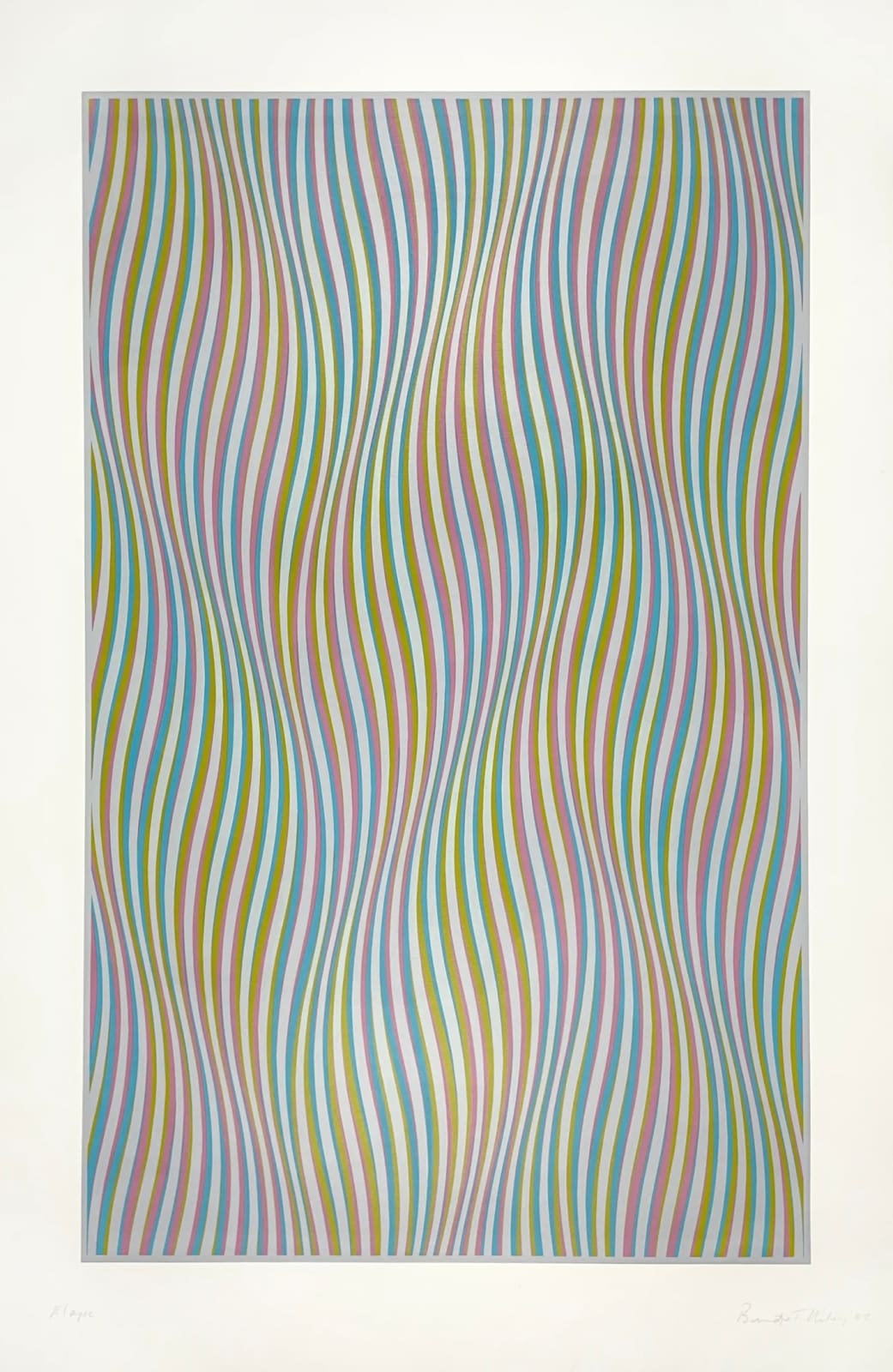Bridget Riley British, b. 1931
Elapse, 1982
screenprint in colours on wove paper
120 x 80 cm (framed)
Edition of 260 plus 1 AP (AP)
Bridget Louise Riley (b.1931, British) CH CBE is a distinguished English painter celebrated for her pioneering contributions to the Op Art movement. Born in Norwood, London, Riley spent part of...
Bridget Louise Riley (b.1931, British) CH CBE is a distinguished English painter celebrated for her pioneering contributions to the Op Art movement. Born in Norwood, London, Riley spent part of her early life in Cornwall before pursuing art studies at Goldsmiths College (1949–1952) and the Royal College of Art (1952–1955).
Riley first attracted critical attention with the dazzling black and white paintings she began to make in 1961. Riley’s works became celebrated for their disturbing and disorientating optical effects (for which the term 'Op Art' was coined), as well as for their undeniable and surprising beauty. Riley’s participation in the seminal exhibition, The Responsive Eye, at the Museum of Modern Art in New York in 1965, established her as an artist of the first rank. Riley's innovative approach earned her the prestigious International Painting Prize at the Venice Biennale in 1968, making her the first woman and first British artist to receive this honour.
Throughout Riley’s career, she has continued to evolve her practice, delving into the interactions of form and colour. Her works are held in major collections worldwide, including the Tate in London. Beyond her artistic achievements, Riley has been recognised with numerous accolades, such as being appointed a Commander of the Order of the British Empire (CBE) in 1974 and becoming a member of the Order of the Companions of Honour (CH) in 1998.
Riley first attracted critical attention with the dazzling black and white paintings she began to make in 1961. Riley’s works became celebrated for their disturbing and disorientating optical effects (for which the term 'Op Art' was coined), as well as for their undeniable and surprising beauty. Riley’s participation in the seminal exhibition, The Responsive Eye, at the Museum of Modern Art in New York in 1965, established her as an artist of the first rank. Riley's innovative approach earned her the prestigious International Painting Prize at the Venice Biennale in 1968, making her the first woman and first British artist to receive this honour.
Throughout Riley’s career, she has continued to evolve her practice, delving into the interactions of form and colour. Her works are held in major collections worldwide, including the Tate in London. Beyond her artistic achievements, Riley has been recognised with numerous accolades, such as being appointed a Commander of the Order of the British Empire (CBE) in 1974 and becoming a member of the Order of the Companions of Honour (CH) in 1998.
